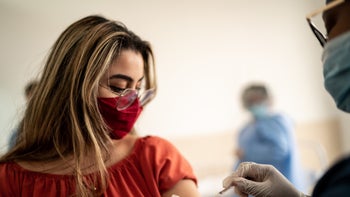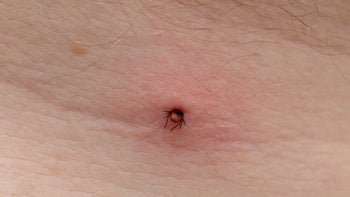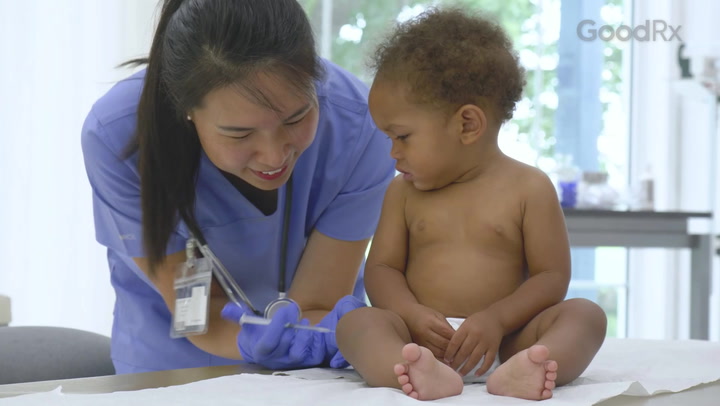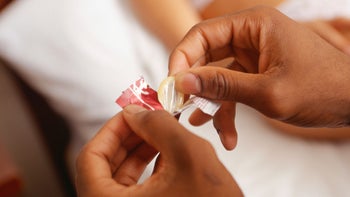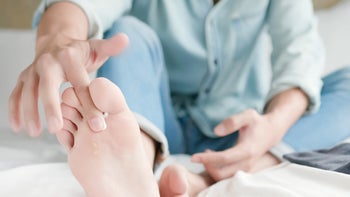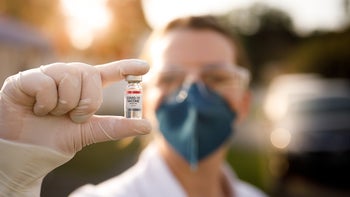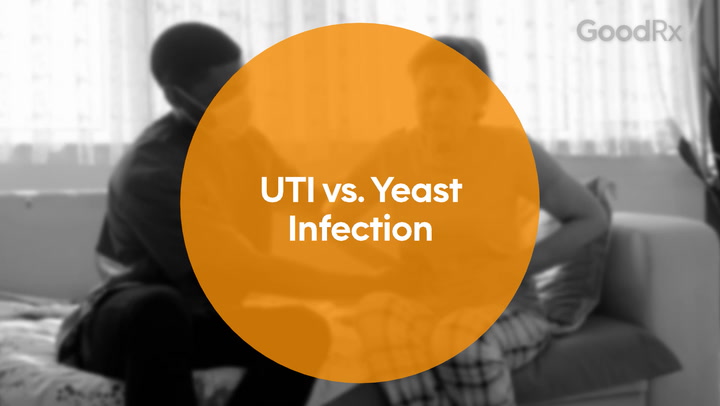
What You Need to Know About Listeria
Key takeaways:
Listeria monocytogenes is a bacteria found commonly throughout the environment. This includes the foods we eat. For most healthy people, it does not cause symptoms or infection.
Some people have a higher chance of getting sick from Listeria. Examples include newborns, older adults, those who are immunocompromised, and pregnant women.
If you are at higher risk for listeria infection, you can lower your chances of getting it by avoiding certain foods — like unpasteurized milk products and deli meats.

Listeria is a bacteria that lives everywhere. It lives in the soil, bodies of water, and even in some animals. This means it can easily make its way into our food and water sources.
You have likely come in contact with listeria without it causing any problems. But some people can get very sick from it — this is a condition called listeriosis. It affects less than 2000 people in the U.S. each year, but it can be serious and even life-threatening. So it helps to know if you are at greater risk for this infection. In this article, we’ll review what you need to know about listeria, who is at higher risk for listeriosis, and how to treat and prevent it.
Where can you get Listeria?
Listeria is more likely to be found in some foods more than others. And it can continue to grow in the refrigerator. So even if foods are stored properly, they can still contain listeria. This also means that someone could eat the same contaminated food more than once.
The foods that most often contain listeria include:
Raw sprouts
Raw (unpasteurized) milk
Soft cheese
Deli meats and hot dogs
Smoked seafood
In addition to ingesting listeria in your food, the bacteria can be spread between people by something called fecal-oral transmission. This means the bacteria makes its way from someone’s stool into someone else’s mouth. This commonly happens if someone does not wash their hands well after using the restroom or changing a diaper.
Read more like this
Explore these related articles, suggested for readers like you.
What groups are at higher risk?
The good news is that the majority of people who come in contact with listeria do not get sick. The groups that are at higher risk for getting sick include:
Babies: This is especially true of newborns or infants less than 29 days of age. But even infants a little older than this are at higher risk. This is because their immune system is still developing, and they cannot fight off the bacteria as well as older children.
Older adults: Generally, this would include those older than 65 years of age. This is also related to the fact that the immune system naturally changes with age.
People with weaker immune systems: This group includes people with cancer, diabetes, HIV, or autoimmune diseases. It also includes people who are on medications that affect their immune function, like chemotherapy or immunosuppressants.
Pregnant women: While pregnant women do not get particularly sick themselves, listeria can cross the placenta and infect the developing baby. When this happens, it is potentially fatal for the unborn baby.
People taking proton-pump inhibitors: Stomach acid can kill listeria. People who take acid-reducing medications may not be able to kill the bacteria as easily. Examples of these medications include omeprazole and pantoprazole.
Symptoms
If you eat listeria-contaminated food, you can see symptoms as early as the first day. Listeria is unusual in that it can stay in your body without causing illness for as long as 70 days. This longer period between ingestion and sickness may be especially true in pregnant women.
Most healthy adults do not get sick when they come into contact with listeria. If they do get sick, it’s generally a mild “flu-like” illness. Symptoms can include:
Fever
Diarrhea
Nausea and vomiting
Headache
Muscle aches
These symptoms will typically resolve in 1 to 2 days.
For higher-risk groups, the illness tends to be more serious. And it can lead to more symptoms than the ones a normal adult would experience.
Listeria can get into different parts of the body — beyond the stomach and digestive tract — and cause serious issues. These symptoms tend to take a little more time to develop, usually between 1 to 4 weeks. This includes:
Bloodstream infection: If listeria gets in your bloodstream, it can travel to different parts of the body and cause many different symptoms. This includes fever and chills, muscle aches, fatigue, headache, vomiting, and diarrhea. This can also lead to a life-threatening issue called sepsis.
Meningitis: Listeria can also lead to an infection of the lining of the brain. This tends to cause fever, stiff neck, headache, confusion, and excessive sleepiness. In more severe cases, people can also develop seizures.
Pregnant women
Despite generally having mild symptoms, pregnant women are still considered a higher-risk group because of the danger to the unborn baby. Like other healthy adults, pregnant women can have no symptoms and be unaware that they have listeria in their bodies. If they do notice symptoms, they are generally mild and the same as the one listed above for healthy adults.
Unfortunately, listeria can cross the placenta. This means the unborn baby can become infected and potentially very sick. This is true even if the mother has a mild illness or has already recovered. Babies can also become infected during birth or shortly thereafter. In these instances, babies can also develop bloodstream infections or meningitis. About 20% of fetal cases of listeria result in the death of the unborn baby.
Diagnosis
Most people with mild infections never get officially diagnosed with listeriosis. That is because the infection resolves quickly in healthy adults, before they even get medical help.
In higher-risk groups, diagnosis is more important to make sure they get the right treatment, as listeria bacteria is not easily detected.
Although listeriosis is most often a diarrheal illness, stool cultures are not very good at detecting infection. A culture is when you place a testing sample in a petri dish and watch to see what bacteria grows. When someone gets sick from listeria, the best tests are cultures of other fluid. This can include blood, spinal fluid, or placental fluid.
Treatment
As we mentioned, many healthy adults with normal immune systems will recover from their infection without any specific treatment. But when someone gets very sick from listeria or has a weak immune system, specific treatment is needed to prevent issues or death.
There are several different antibiotics that can treat listeriosis. The specific treatment course depends on someone’s age, illness severity, and other medical conditions. But treatment typically involves some combination of:
Gentamicin
Most importantly, when someone is very sick, these medications need to be given in the hospital in intravenous (IV) form.
When someone who is pregnant has been potentially exposed to listeria but does not develop symptoms, no treatment is needed. But if they develop any symptoms of infection — even if they are mild — antibiotics are typically started while further testing is done. They are given the same antibiotics used for someone who is very sick.
Prevention
If you are pregnant or in one of the high-risk groups, prevention is key. Like many infections, this starts with good hand washing. Particularly after using the bathroom, before and after food preparation, and before and after eating.
The CDC also provides detailed guidelines on safe food preparation and consumption to lower the risk of listeria. This includes avoiding:
Raw (unpasteurized) milk products
Any cheese made from raw milk (this often includes soft cheeses, such as feta, queso fresco, brie, Camembert, and Roquefort)
Raw sprouts
Deli meats and hot dogs
Pate
Smoked seafood
Cut melon that has not been immediately refrigerated
What if you eat food that is contaminated with listeria? For most people, if you do not have any symptoms, there is no need to be alarmed. If you do develop symptoms within 2 months of exposure, you should see your regular medical provider. Let them know that you came in contact with listeria when they evaluate your symptoms.
The bottom line
Listeria can cause a serious and life-threatening infection for pregnant people and those with weaker immune systems. Healthy adults with normal immune systems are much less likely to have any issues from it. But if you do get sick from listeria, there is treatment available. So, get medical help right away if you start to develop symptoms. Especially if you are in one of the higher-risk groups. It also helps to know the foods to avoid to significantly lower your risk of a listeria infection.
Why trust our experts?


References
Centers for Disease Control and Prevention. (2019). Prevention.
FoodSafety.gov. (2020). People at risk: Pregnant women.
Hernandez-Milian, A., et al. (2014). What is new in listeriosis? BioMed Research International.
Janakiraman, V. (2008). Listeriosis in pregnancy: Diagnosis, treatment, and prevention. Reviews in Obstetrics & Gynecology.
Rogalla, D., et al. (2021). Listeria monocytogenes. StatPearls.







